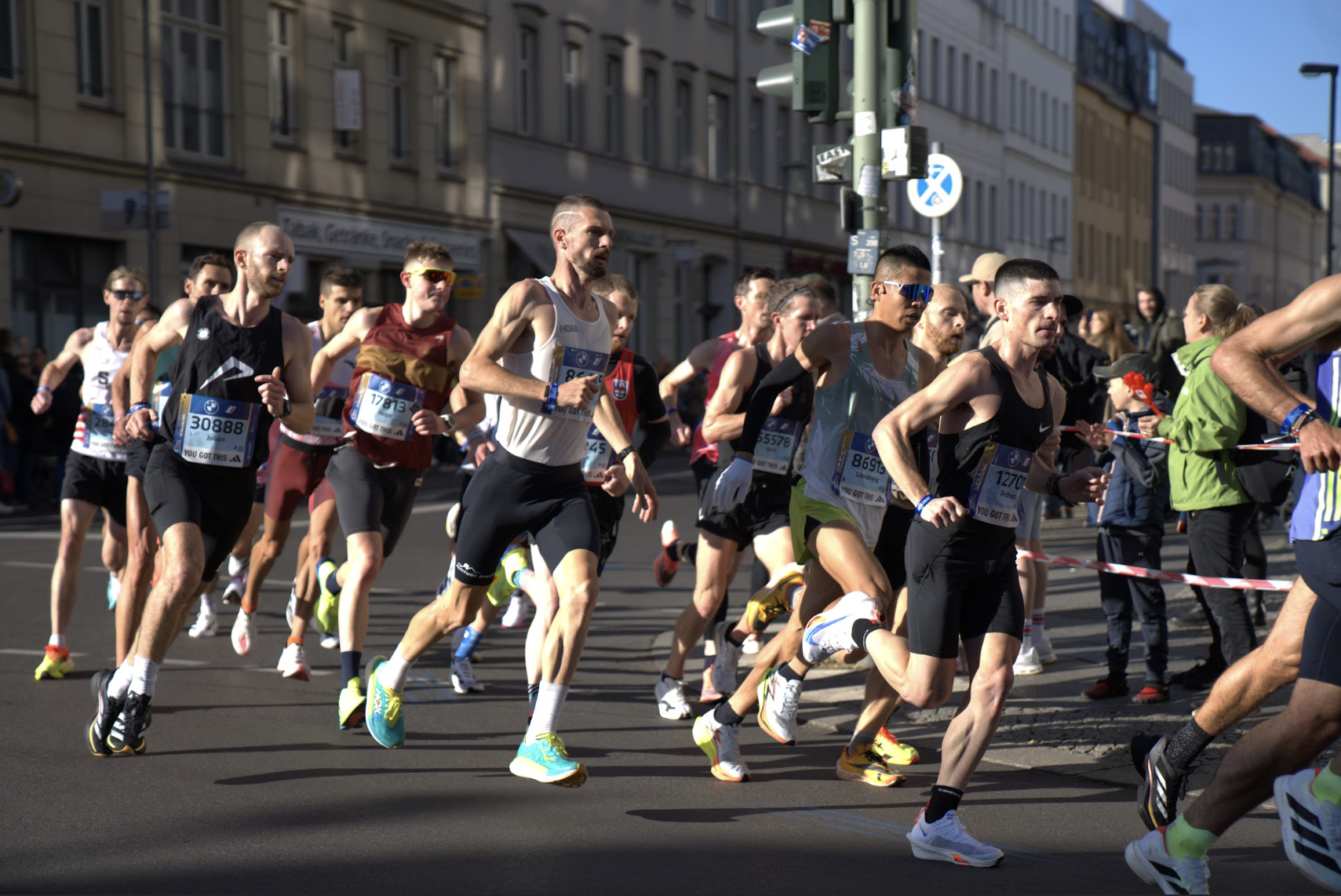What I Learnt About Injury As A Pregnant Runner

If you’re running during pregnancy, you are at higher risk of picking up an injury. As a pregnant runner, I wanted to find out more about that. Actually, I had to find out more about that because, well, I got injured.
I was well into my running and pregnancy journey, and the running had been going well. I was training for a 10K race, so was getting out a few times a week without any major problems. But then around 20 weeks into my pregnancy, I headed out in the freezing cold to run around a local reservoir with my dog, Ralph, on his canicross harness. We warmed up and headed off around the 10K loop, but just after halfway I felt a niggle in my glute. It was a literal pain in the butt! I stopped to walk it off, but that made it feel more sore.
So, I did what any sensible runner that’s 7K into a 10K loop would do: I started jogging again, because it hurt less than walking. But this only lasted for a few minutes until the pain returned, and I was back to walking (which still hurt!). By the time I got back to the car park I was in a significant amount of pain.
I carried on as normal that week and the pain eased. My job as a personal trainer is quite physical, especially when I teach classes with lots of demonstrations, so I did my weekly HIIT classes and attended a pregnancy yoga session. I rounded off the week with a parkrun. It was a two-lap route and by the second lap I was starting to feel a twinge again. I finished the run, but it didn’t feel great.
I booked in to see my physiotherapist, Loren, who is so knowledgeable and, having been a pregnant runner herself, had all of the best advice and tips to give. She identified the pain not as a glute issue, but as an overstretched sacroiliac joint, or SI joint. That’s the joint between the sacrum and the ilium bones of the pelvis, which supports the spine.
The SI joint only has a small range of movement, so anything like running or stretching your legs out to the side (like in a lateral lunge or when you get out of a car), can over-stretch that joint. An 18kg spaniel attached to your waist can probably over-stretch it, too. Oops!

Loren recommended some rehab exercises, as well as investing in a sacroiliac belt to wear around my hips day-to-day, which helps to keep the pelvis in place, relieving pain and tension of the lumbar spine and hip joints, while stabilising the pelvic girdle.
I also found out that I’m not alone when it comes to SI joint pain as this is a discomfort or injury commonly felt by pregnant runners.
According to a Sports Med 2024 survey, which questioned over 3,000 pregnant runners about musculoskeletal pain when running during their pregnancy, 86% experienced pain and of them 59% had pain in the pelvis/sacroiliac joint. The survey also revealed that 52% felt pain in the lower back, 51% in the abdomen, 44% in the breast, and 40% in the hip. The highest prevalence of pain described as ‘severe-to-worst’ was at the pelvis/sacroiliac joint.
The results from that study back up the claims that if you’re running during pregnancy, you could be at higher risk of picking up an injury, and one of the main reasons is because of the change in your hormone levels.
During pregnancy, your body produces more of the hormone relaxin. This is a good thing because your body needs it to help get ready for birth, but it can make you more susceptible to injury, since your ligaments become a bit looser. As well as this, your centre of gravity will also change in pregnancy, which can alter the load throughout your body, and that can also lead to discomfort and injuries.
Luckily for me, despite feeling like this was the end of running in my pregnancy, I got back up and running (pun definitely intended!) and managed to complete my 10K race a few weeks later.
Let me know if you have any questions about running in pregnancy, and I’ll keep providing the updates! Happy running.
Here’s Anna running a 10K race while 23 weeks pregnant:





























Running News
Ingebrigtsen Stars at World Athletics Indoor Championships 2025 – Plus All The Winners!
Sam Ruthe Is First 15-Year-Old To Run A Four-Minute Mile!
Eliud Kipchoge Will Run The 2025 Sydney Marathon!